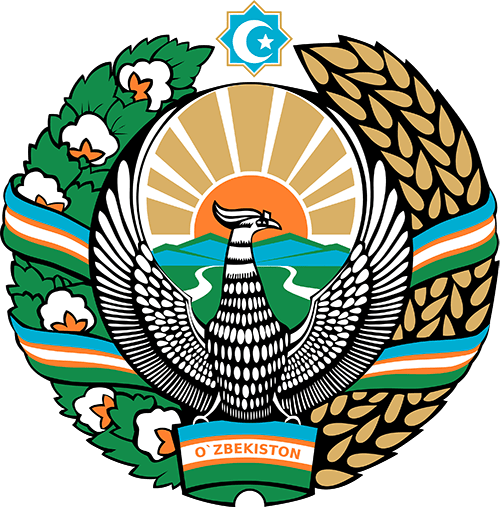АНАЛИЗ ФАКТОРОВ РИСКА И ЛАБОРАТОРНЫХ ДАННЫХ ПРИ АМБУЛАТОРНОМ НАБЛЮДЕНИИ БОЛЬНЫХ С COVID-19 И ИНФАРКТОМ МИОКАРДА
Абдукодирова Н.М., Центр развития профессиональных квалификаций медицинских работников
Хашимов А.А., Центр развития профессиональных квалификаций медицинских работников
Саидов Х.Х., Центр развития профессиональных квалификаций медицинских работников
Тулабоева Г.М., Центр развития профессиональных квалификаций медицинских работников
Талипова Ю.Ш., Центр развития профессиональных квалификаций медицинских работников
Нуралиева Д.М. Центр развития профессиональных квалификаций медицинских работников
Резюме
В исследование были включены 68 пациентов с инфарктом миокарда (ИМ) и COVID-19. Группу сравнения составили 60 больных COVID-19 с рецидивирующим ИМ. Результаты длительного наблюдения за больными ИМ и COVID-19 подтвердили сохранение воспалительного процесса. Показано, что воспалительный процесс поддерживает высокие уровни лейкоцитоза, СРП, СОЭ в крови, а процесс дислипидемии у этих больных имеет убедительно высокую частоту. Депрессия была одним из ведущих факторов риска развития COVID-19 и инфаркта миокарда.
Ключевые слова: (ИМ) инфаркт миокарда, COVID-19, (СОЭ) скорость оседания эритроцитов, (СРБ) s-реактивный белок.
Первая страница
115
Последняя страница
119
Для цитирования
Абдукодирова Н.М., Хашимов А.А., Саидов Х.Х., Тулабоева Г.М., Талипова Ю.Ш., Нуралиева Д.М. АНАЛИЗ ФАКТОРОВ РИСКА И ЛАБОРАТОРНЫХ ДАННЫХ ПРИ АМБУЛАТОРНОМ НАБЛЮДЕНИИ БОЛЬНЫХ С COVID-19 И ИНФАРКТОМ МИОКАРДА // Евразийский вестник педиатрии. — 2022; 2 (13): 115-119. https://clck.ru/rg93P
Литература
- 1. Hendren N.S., Grodin J.L., Drazner M.H. Unique patterns of cardiovascular involvement in COVID-19. J. Card. Fail. 2020; 26 (6): 466–469. DOI: 10.1016/j.cardfail. 2020. 05.006.
- 2. Zhang H., Penninger J.M., Li Y. et al. Angiotensinconverting enzyme 2 (ACE2) as a SARS-CoV-2 receptor: molecular mechanisms and potential therapeutic target. Intensive Care Med. 2020; 46 (4): 586–590. DOI: 10.1007/ s00134-020-05985-9.
- 3. Inciardi R.M., Adamo M., Lupi L. et al. Characteristics and outcomes of patients hospitalized for COVID-19 and cardiac disease in Northern Italy. Eur. Heart J. 2020; 41 (19): 1821– 1829. DOI: 10.1093/eurheartj/ehaa388.
- 4. Guo T., Fan Y., Chen M. et al. Cardiovascular implications of fatal outcomes of patients with coronavirus disease 2019 (COVID-19). JAMA Cardiol. 2020; 5 (7): 811–818. DOI: 10.1001/jamacardio.2020.1017.
- 5. Bansal M. Cardiovascular disease and COVID-19. Diabetes Metab. Syndr. 2020; 14 (3): 247–250. DOI: 10.1016/j. dsx.2020.03.013
- 6. Shono A., Mori S., Nakamura K., Yatomi A., Takada H., Tanaka H. et. al. Glucocorticoid-sensitive Paroxysmal Atrial Fibrillation, Sick Sinus Syndrome, and Mitral Regurgitation in a Patient with Malignant Rheumatoid Vasculitis. Internal Medicine (Tokyo, Japan). 2019;58(21):3093-8.
- 7. Wright F.L., Vogler T.O., Moore E.E., Moore H.B., Wohlauer M.V., Urban S. et. al. Fibrinolysis Shutdown Correlates to Thromboembolic Events in Severe COVID-19 Infection. Journal of the American College of Surgeons. 2020; S1072-7515(20)30400-2.
- 8. Tang N., Li D., Wang X., Sun Z. Abnormal coagulation parameters are associated with poor prognosis in patients with novel coronavirus pneumonia. Journal of Thrombosis and Haemostasis. 2020; 18(4):844-7.
- 9. Thachil J., Tang N., Gando S., Falanga A., Cattaneo M., Levi M. et al. ISTH interim guidance on recognition and management of coagulopathy in COVID‐19. Journal of Thrombosis and Haemostasis. 2020;18(5):1023-6.
- 10. Liao X., Wang B., Kang Y. Novel coronavirus infection during the 2019-2020 epidemic: preparing intensive care units — the experience in Sichuan Province, China. Intensive Care Medicine. 2020;46(2):357-60.
- 11. The Open SAFELY Collaborative, Williamson E., Walker A.J., Bhaskaran K.J., Bacon S., Bates C. et al. OpenSAFELY: factors associated with COVID-19-related hospital death in the linked electronic health records of 17 million adult NHS patients. Epidemiology. 2020.
- 12. Schett G., Sticherling M., Neurath M.F. COVID-19: risk for cytokine targeting in chronic inflammatory diseases? Nature Reviews Immunology. 2020;20(5):271-2.
- 13. Mehta P., McAuley D.F., Brown M., Sanchez E., Tattersall R.S., Manson J.J. COVID-19: consider cytokine storm syndromes and immunosuppression. The Lancet. 2020;395(10229):1033-4.
- 14. Xu X., Han M., Li T., Sun W., Wang D., Fu B. et al. Effective treatment of severe COVID-19 patients with tocilizumab. Proceedings of the National Academy of Sciences. 2020;117(20):10970-5.
- 15. Ucciferri C., Auricchio A., Di Nicola M., Potere N., Abbate A., Cipollone F. et al. Canakinumab in a subgroup of patients with COVID-19. The Lancet Rheumatology. 2020;
- 16. Wan M.T., Shin D.B., Winthrop K.L., Gelfand J.M. The risk of respiratory tract infections and symptoms in psoriasis patients treated with IL-17-pathway inhibiting biologics: A meta-estimate of pivotal trials relevant to decision-making during the COVID-19 pandemic. Journal of the American Academy of Dermatology. 2020; S0190962220308665.
- 17. Cao Y., Wei J., Zou L., Jiang T., Wang G., Chen L. et al. Ruxolitinib in treatment of severe coronavirus disease 2019 (COVID-19): A multicenter, single-blind, randomized controlled trial. Journal of Allergy and Clinical Immunology. 2020;S0091674920307387.
- 18. Li H., Chen C., Hu F., Wang J., Zhao Q., Gale R.P. et al. Impact of corticosteroid therapy on outcomes of persons with SARS-CoV-2, SARSCoV, or MERS-CoV infection: a systematic review and meta-analysis. Leukemia. 2020;34(6):1503- 11.
- 19. Zha L., Li S., Pan L., Tefsen B., Li Y., French N. et al. Corticosteroid treatment of patients with coronavirus disease 2019 (COVID‐19). Medical Journal of Australia. 2020;212(9):416-20.
Статья доступна ниже:



